As an anthropologist, I wanted to choose some specific talismans and amulets, the main priority being to tell a story that goes beyond the boundaries of our western culture, so you will therefore find a series of elements in the Gioielli Magia section that dates back to pre-Roman times, and which also goes beyond the pattern and structure of our organized societies to focus attention on all those elements and beliefs that are typical of societies and which we would define as primitive or, in any case, non-European.
As an anthropologist, I wanted to choose some specific talismans and amulets, the main priority being to tell a story that goes beyond the boundaries of our western culture, so you will therefore find a series of elements in the Gioielli Magia section that dates back to pre-Roman times, and which also goes beyond the pattern and structure of our organized societies to focus attention on all those elements and beliefs that are typical of societies and which we would define as primitive or, in any case, non-European.
Amulets and talismans are the earliest ornaments in the history of humankind; they are worn not out of vanity but for the divine benevolence they would attract. These are protective, propitiatory and curative pieces with the purpose of warding off evil, attracting benign influences and containing therapeutic properties. Maria Cristina del Mare proposes a selection of “magic” jewellery that, through time and cultures, tells us of man’s primordial need to believe in a supernatural dimension able to rule over the unpredictable factors such as health, luck and illness.
Fibula
Great Kabylie, Algeria, late 19th century
silver, polychrome cloisonné enamel, Mediterranean coral
11 cm
Cristina Del Mare collection
In the Great Kabyle of Algeria, the Beni Yenni population use this tabzimt fibula for its excellent apotropaic value, synthesised into five coral bezels, combining the number 5 (a symbolic reference to Islamic ritual) with coral, a propitiatory and good luck material recognised throughout the Mediterranean basin.
Coral horns, moon crescents, phallic pendants, esoteric symbols, cosmic diagrams. What do all these elements have in common? A magical idea of the life force that emanates from them, a superstitious power that have been attributed to them in various periods, transforming them into precious and essential symbols of defence and good luck, to be
worn and kept at all times
Fibula
Pieve d’Alpago (Belluno), loc. Pian de la Gnela, pre-Roman necropolis - Tomb 10, iron age, late 6th century B.C.
cast bronze, white glass paste, engraving
fibula 9.7 cm; pendants 4 cm
Soprintendenza Archeologia del Veneto, Padua
Bow fibula with triangular pendant decorated with die eyes and three pendants shaped as open hands (decorated with engraved lines). The shaft and pin of the fibula bear five rings of cast bronze. Part of the grave goods of a rich female burial of pre-Roman times.
Ornamento Braccio
India, 17th century
gold, gems, champlevé enamel
4.3 x 3.2 cm
Cristina Del Mare collection
In the navaratna amulets, each gem represents a planet and corresponding divinity: the Sun-Surya is associated with ruby, Saturn-Shani with blue sapphire, Jupiter- Brhaspati with topaz, Mercury-Buddha with emerald, Venus-Skukra with diamond, Moon-Chandra with pearl, Mars-Mangala with coral, Rahu, the eclipse, with zircon, Ketu, the comet, with tiger-eye agate.
Pendente
Tibet, 19th century
silver, gilt copper, coral, turquoise
9.8 x 10 cm
Antonino De Simone collection
The ga’u, box-amulets used by Himalayan populations of a Lamaist Buddhist faith, contain not only objects of a defensive power, but also highly symbolic decorative forms. This ga’u, reproduces the form of a mandala,
the diagram of the Universe, in a mosaic of turquoise and coral, set in a gilt copper frame.
Bracciale
Madhya Pradesh, India, late 19th century
cast bronze
10 cm
Roberta Ceolin collection
This bracelet, made using the cire perdu method in cast bronze, depicts a pair of farmers tilling a field rich in crops. These ornaments, given to a bride during the wedding ceremony and worn for the propitiatory ceremonies during sowing, take on a talismanic function to assure fertility and abundance.
Ornamenti da orecchio
Nagaland, India, late 19th century
Xancus Pyrus shells, glass paste, bamboo
8 x 4.5 cm
Roberta Ceolin collection
In archaic and ethnic cultures such as the Konyak Naga in north-east India, ornaments made with natural elements with magical and protective virtues respond to an atavistic need for protection. Such is the case of these ear ornaments worn by warriors and bearing engraved anthropomorphic symbols.


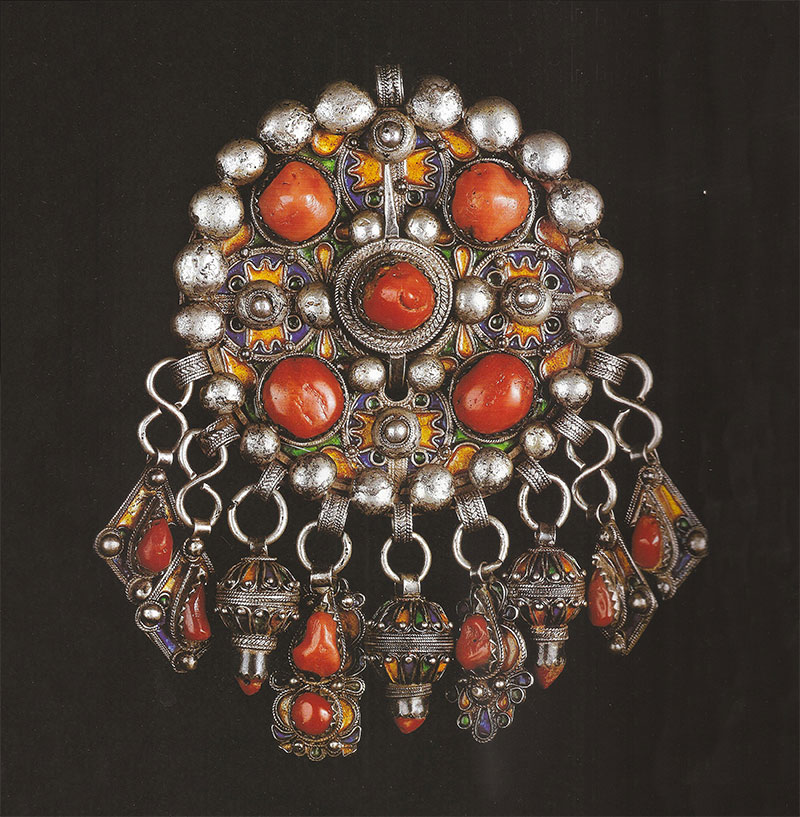
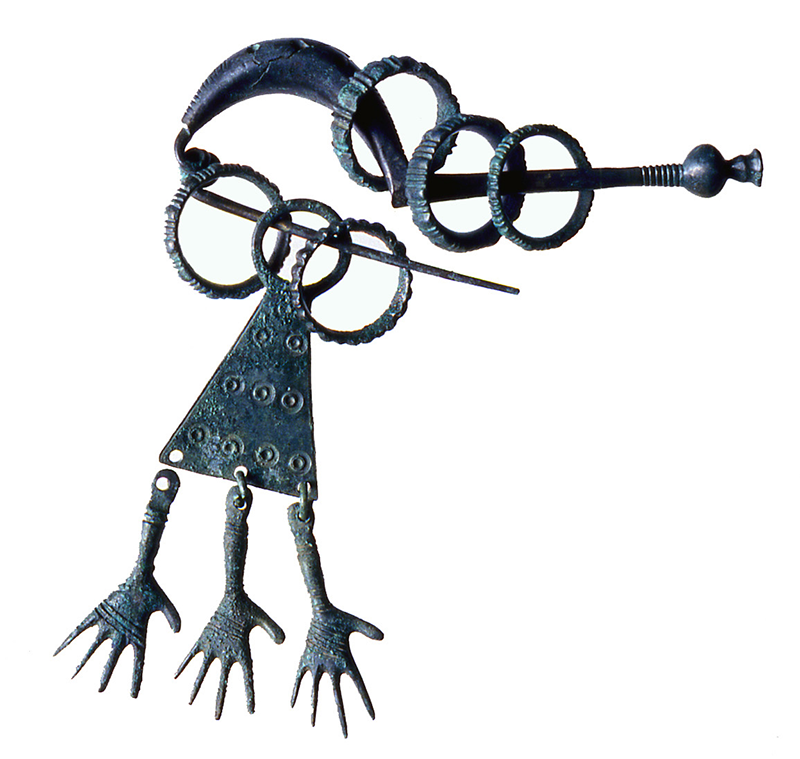
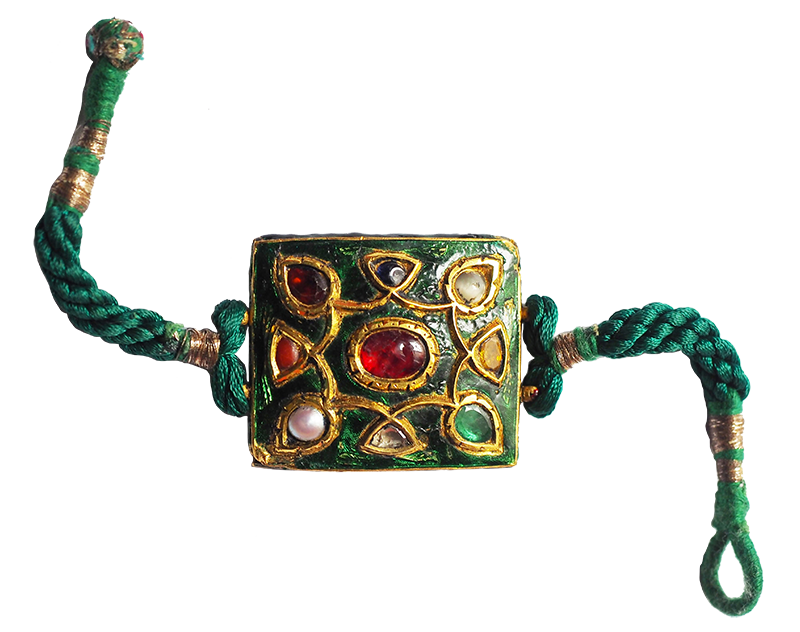
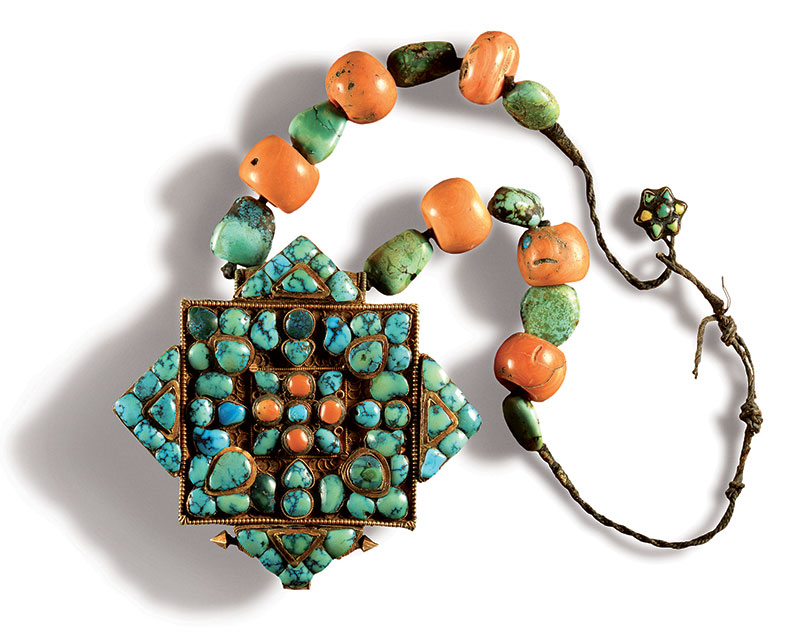
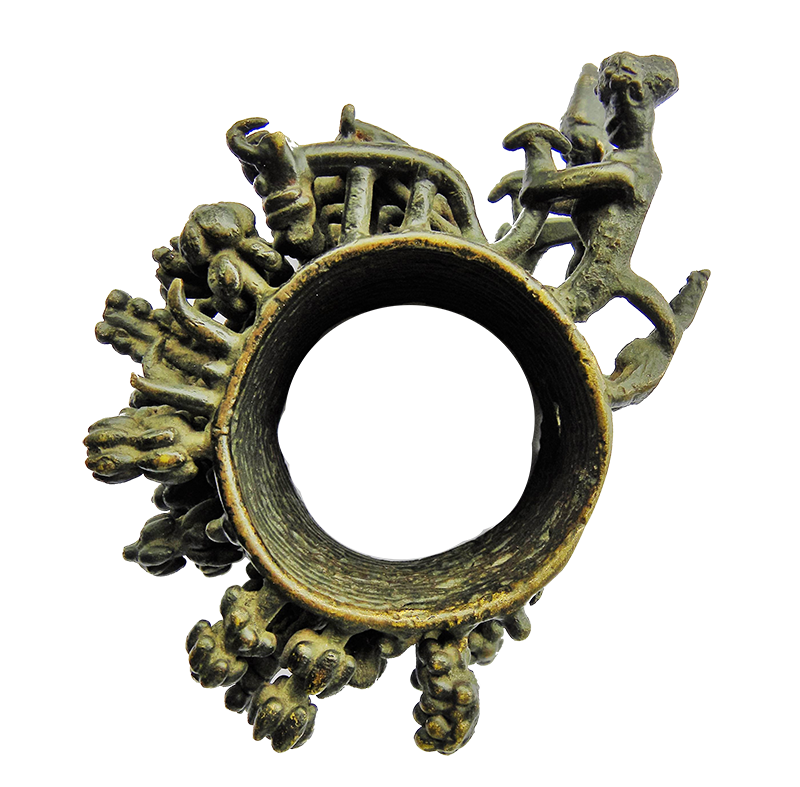
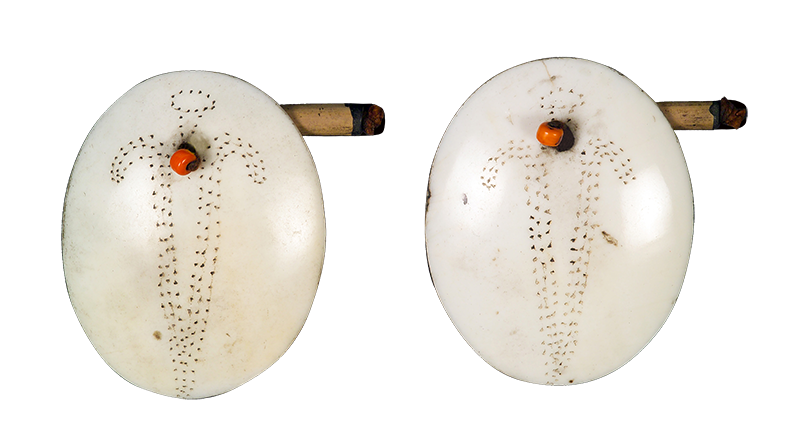

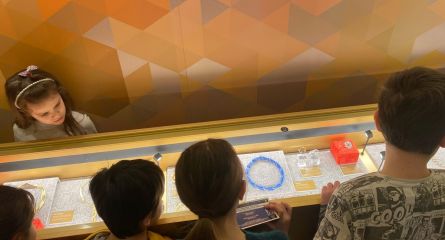
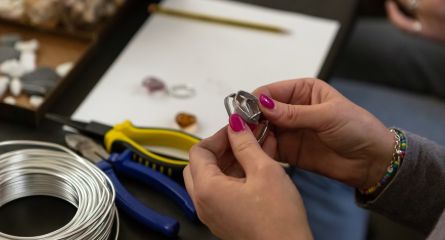
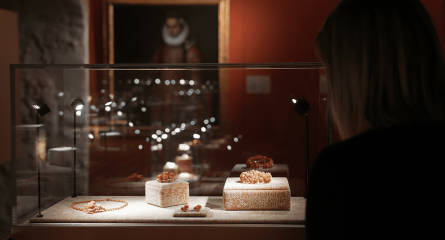









Follow us on social networks
Subscribe to the newsletter